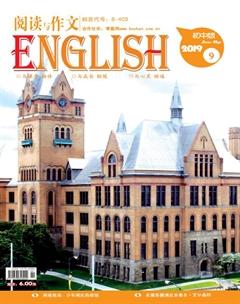完形填空
閱读下面短文,掌握其大意,然后从各题所给的A、B、C或者D四个选项中选出最佳选项。
(一)
China is a large country of agriculture[农业]. We all know that there are more than 800 million ___1___ in China.
China starts to ___2___ the science of agriculture much earlier ___3___ other countries in the world. ___4___ people in Europe and America were trying to shoot wild animals and birds for food, farmers in China were ___5___ the science of agriculture. For example, Jia Sixie, who lived in the Northern Wei period (386-534AD), ___6___ one of the farming pioneers. After he finished his work in government, he ___7___ home and spent his time on research into agriculture. He ___8___ information, did experiments and learnt from the experience of farmers. He wrote a book called Qi Min Yao Shu. The book ___9___ has 110000 words is about both farming and gardening. This book is ___10___ to be an important summary[概要] of the knowledge of farming.
( ) 1.A.workers B.farmers C.pioneers D.scientists
( ) 2.A.develop B.grow C.choose D.interest
( ) 3.A.to B.till C.then D.than
( ) 4.A.Where B.For C.While D.Because
( ) 5.A.trying B.working C.studying D.growing
( ) 6.A.were B.was C.came D.be
( ) 7.A.left B.built C.returned D.destroyed
( ) 8.A.advised B.improved C.collected D.planted
( ) 9.A.who B.whom C.it D.which
( ) 10.A.made B.considered C.kept D.studied
(二)
Everyone in China ___1___ Mid-Autumn Day. It usually comes ___2___ September or October. ___3___ that day everyone eats mooncakes. A mooncake is a delicious, round cake. It ___4___ like the moon. There are many different kinds of mooncakes. Some ___5___ nuts in them, and some have meat and eggs. My friend Li Lei likes the mooncakes ___6___ meat. But I think the ___7___ with nuts in them are nicer. Han Meimei ___8___ the nicest come from Guangdong.
___9___ night, families often stay in the open air near their houses. There they look at the moon and eat the mooncakes. ___10___ delicious they are!
( )1. A. like B. is like C. likes D. looks like
( )2. A. in B. on C. at D. of
( )3. A. in B. At C. By D. On
( )4. A. look B. looks C. be D. is looking
( )5. A. has B. haves C. have D. with
( )6. A. have B. has C. with D. in
( )7. A. one B. cake C. meat D. ones
( )8. A. say B. says C. to say D. is saying
( )9. A. In B. On C. At D. After
( )10. A. What B. What a C. How a D. How
(三)
When you write a letter or make a telephone call, your words ___1___ a message. People communicate with words. Do you think you can communicate ___2___ words? A smile ___3___ your face shows you are happy and friendly. Tears in your eyes tell ___4___ that you are sad. When you ___5___ your hand in class, the teacher knows you want to say something ___6___ ask questions. You shake your head, and people know you are saying no. You nod and people know you are saying ___7___.
Other things can also give some information. For example, a sign at the bus stop helps you to know which bus ___8___. A sign on the wall of your school helps you to find the library. Signs on doors tell you ___9___ to go in or out. ___10___ you ever noticed that there are a lot of signs around you and that you receive messages ___11___ them all the time? People can communicate ___12___ many other ways. ___13___ artist can use his drawings to tell about beautiful mountains, about the blue sea and many other things. Books ___14___ to tell you about all wonderful things in the world and also about people and their ideas. Books, magazines, TV and radio and films all help us to communicate with other people. They all help us to know ___15___ s going on in the world.
( )1. A. take B. bring C. carry D. gives
( )2. A. by B. with C. use D. without
( )3. A. in B. on C. at D. over
( )4. A. others B. the others C. other D. the other
( )5. A. put on B. put out C. put up D. put down
( )6. A. when B. or C. but D. if
( )7. A. no B. hello C. yes D. nothing
( )8. A. to get B. to choose C. to have D. to take
( )9. A. which B. where C. how D. what
( )10. A. Do B. Did C. Had D. Have
( )11. A. from B. of C. about D. for
( )12. A. with B. by C. without D. in
( )13. A. The B. An C. A D. Some
( )14. A. write B. wrote C. is written D. are written
( )15. A. what B. which C. that D. who
參考答案:
(一)1-5 BADCC 6-10 BCCDB
(二)1-5 CADBC6-10 CDBCD
(三)1-5 CDBAC 6-10 BCDCD 11-15 ADBDA
- 阅读与作文(英语初中版)的其它文章
- 四季
- “中国制造”的新含义
- 《荆棘鸟》
- 成语两则
- 奇闻趣事
- 网络欺凌:少年网民的烦恼

